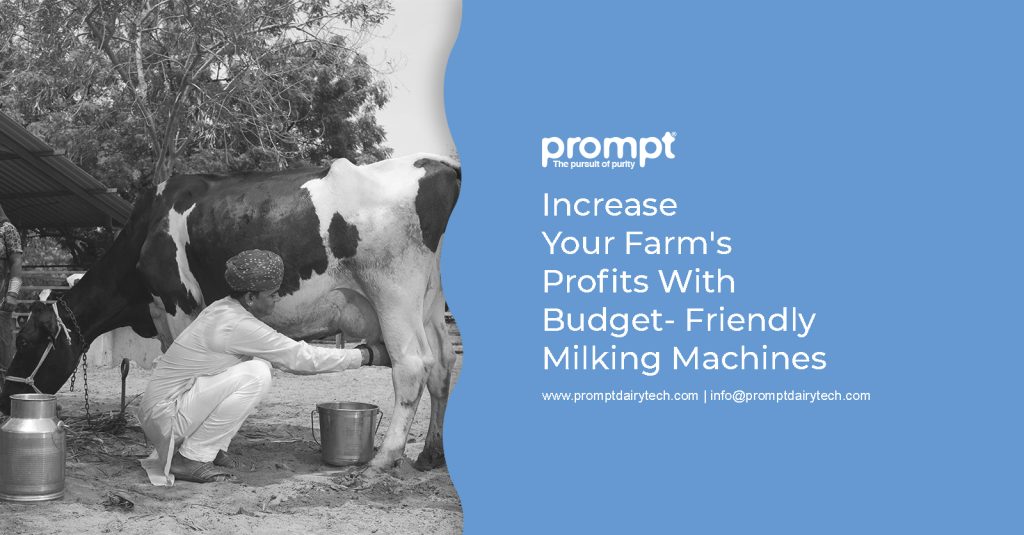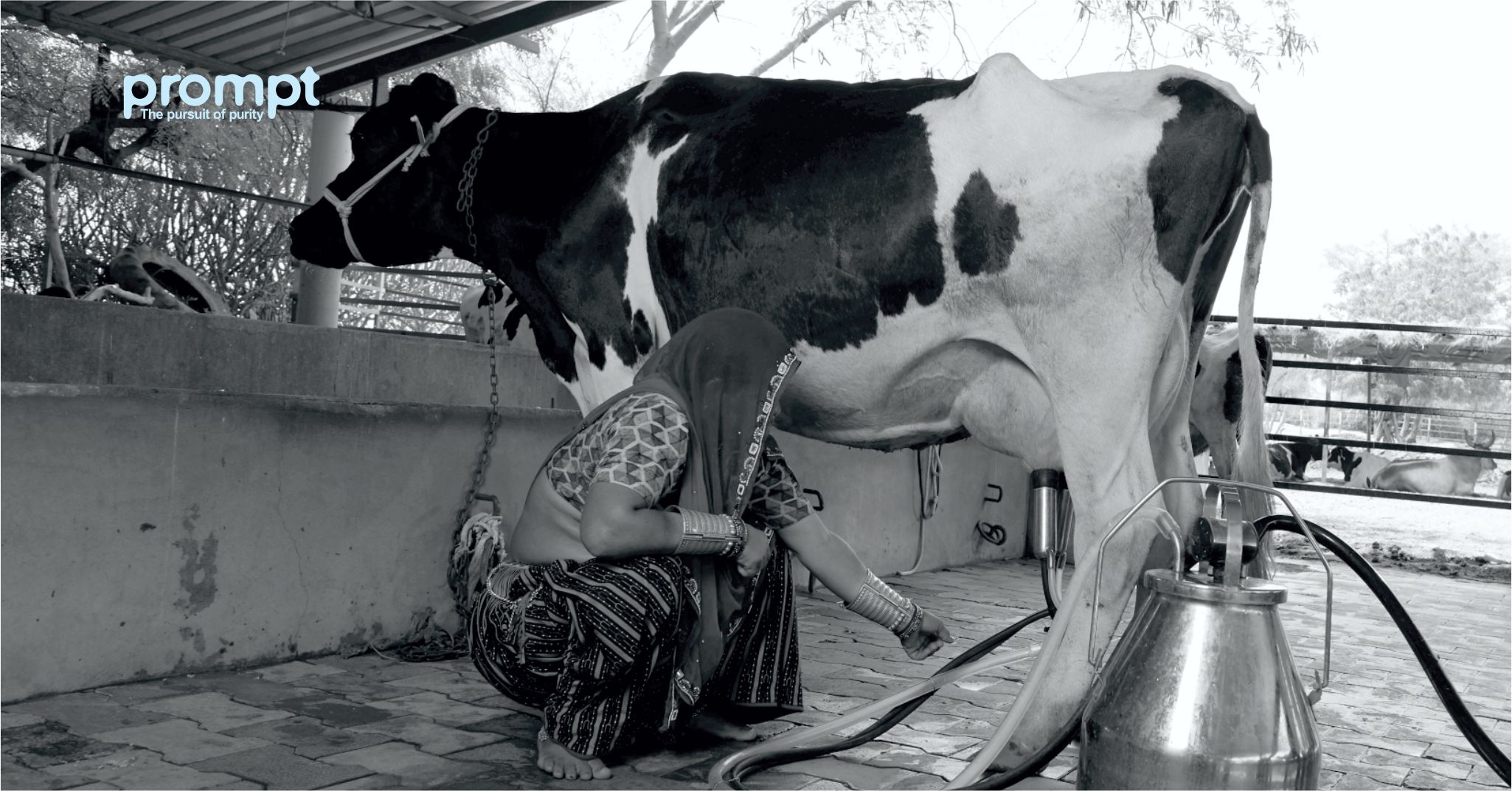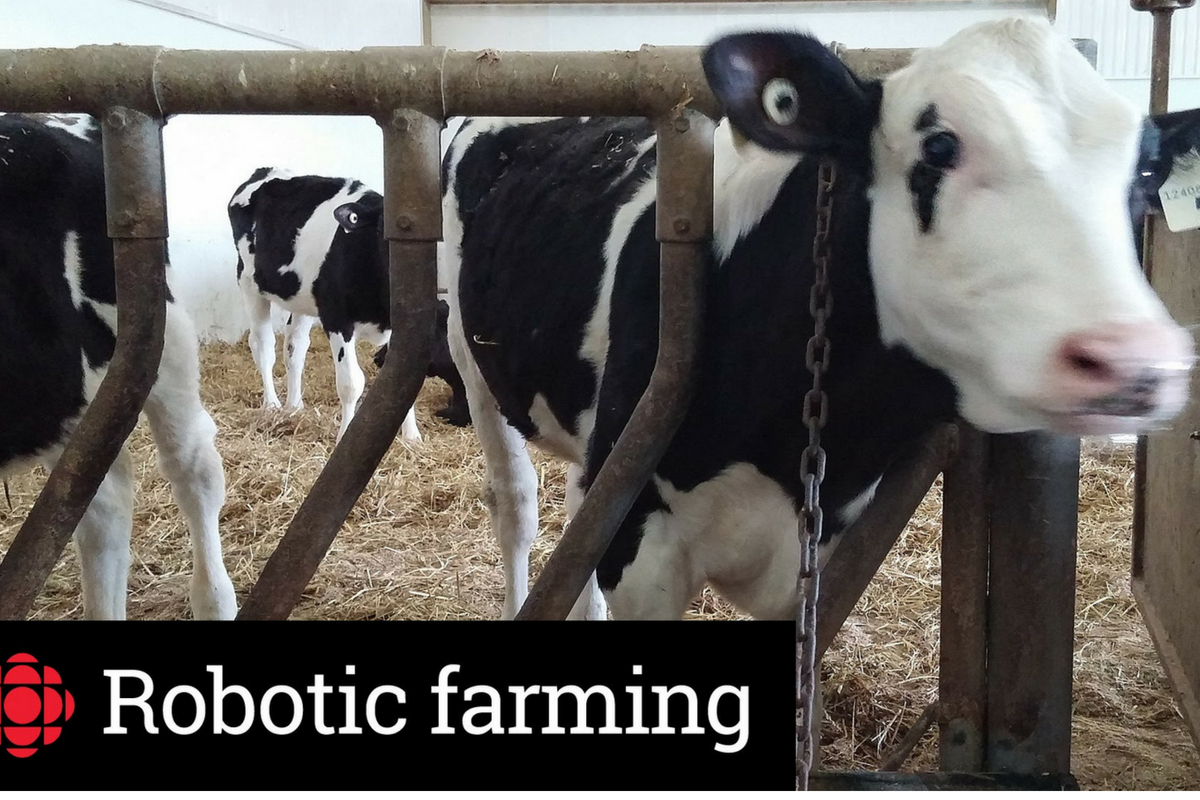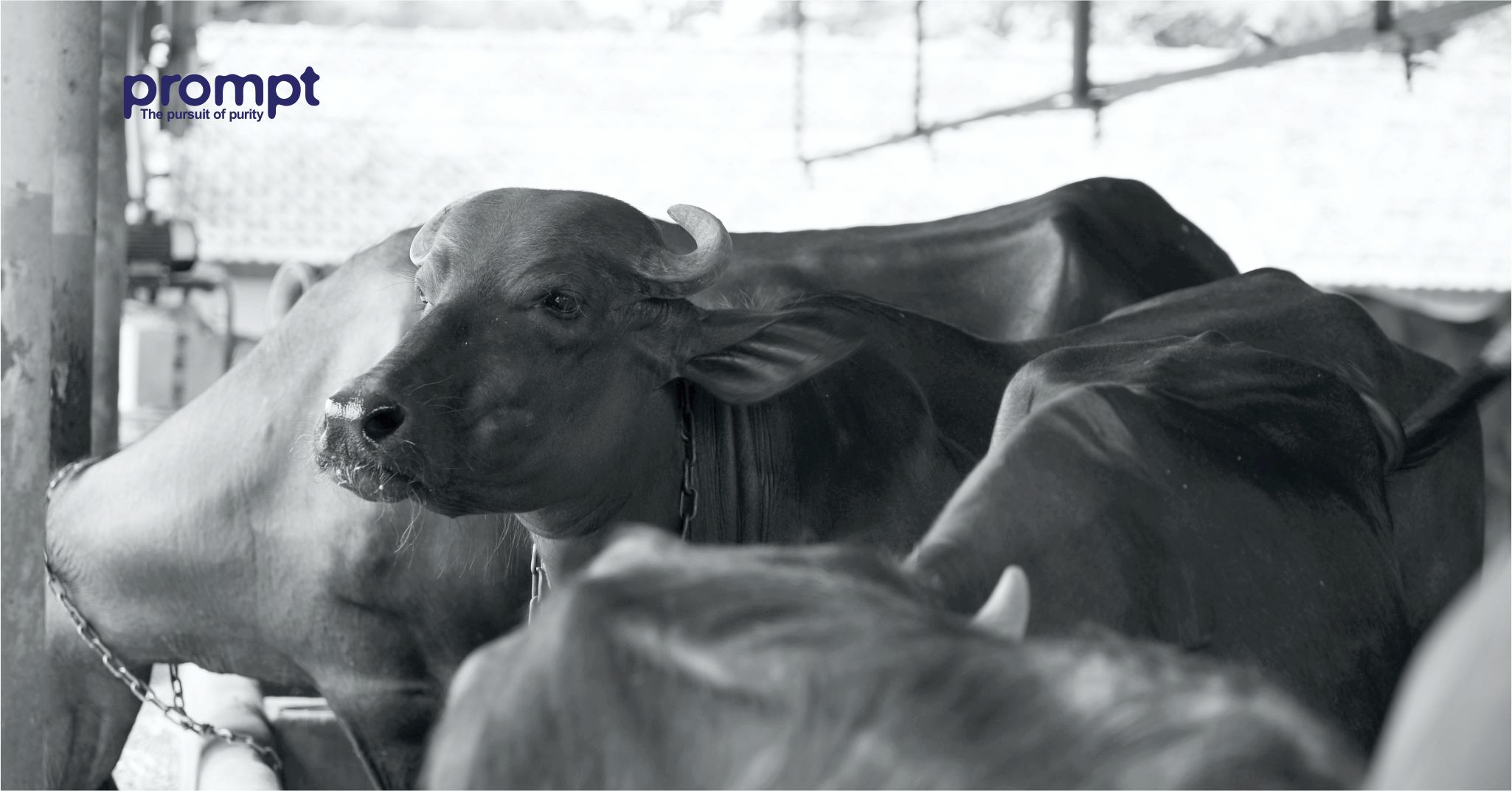For several years, dairy farmers have used traditional methods to collect milk from cows. However, this is a time-consuming and hectic process. Thanks to technological advancement, milking machines are making milk collection and distribution a lot simpler for milk farmers. Small-scale dairy farmers face several financial constraints daily. Lack of capital, poor animal health, rising operational costs, low productivity levels, a shortage of financial support, and expensive technological tools are only the tip of the iceberg. However, dairy is an essential commodity in India. Therefore, dairy farmers must have access to affordable and modern solutions that can improve their operations and help them stay profitable.
A cost-effective, high-quality cow milking machine is an ingenious solution to all problems. These machines are designed to extract milk from the cow efficiently, hygienically, and in less time. Milking cows manually takes time and adds to the operational cost of the dairy. However, by using a milking machine, farmers can extract milk from several cows simultaneously in a short span. These machines also increase the yield as it stimulates the cow by resembling the calves’ natural sucking patterns. Since farmers can complete the milking process quickly, they can focus on other essential tasks on the farm. Finally, these machines are safe for the animal and do not cause any harm. Cost-effective milking machines save money, increase yield, and accomplish more in less time, contributing significantly to the farm’s profitability.
Age-old manual milking techniques:
Three milking techniques are commonly used in dairy farms. They are:
Stripping: In this method, the cow’s teat is firmly gripped between the thumb and the forefinger and pulled down. This way, the milk is pulled down, and it flows in streams. The stripping method is used for smaller cows, and sometimes, it is done to get high-fat milk. One of the advantages of this method is that it increases the chances of getting high-fat milk. However, it is time-consuming, and unequal pressure can hurt the cow.
Full Hand: Here, the teat is held with all five fingers against the palm to milk the cow. This method produces a higher volume of milk. It is a simpler mechanism that does not require special equipment. The farmer also has greater control. This method also reduces the chances of injury. However, if done incorrectly, it can hurt the cow, impact its mood, and impact milk yield. The full hand milking method also compromises hygiene.
Knuckling: In this method, the teat is held between the thumb and the finger, and the thumb exerts pressure on the teat. However, this is not recommended as it is not very efficient and can injure the cows.
Factors to Consider When Choosing Budget-Friendly Milking Solutions:
Purchasing a milking machine can be a significant investment for small-scale dairy farmers. Not only will it increase the farm’s productivity, but it will also generate long-term results in the future. However, before buying a machine, there are a few factors one must consider, such as,
Efficiency and productivity: The first thing farmers need to check is how many liters of milk the machine can extract in one round. A higher volume of milk means the machine is more productive than the rest.
Durability and longevity: Buying a milking machine can be a substantial investment for small farmers. The machine should function seamlessly for years to come.
Ease of maintenance: The third factor is cleaning and maintaining the milking machine. To ensure the milking process is hygienic, the machine should be easy to clean and not require frequent repairs that cost a fortune.
Cost of operation: Farmers also need to consider all associated operational costs they need to incur for using the machines, like labor and electricity charges.
One of the key operations in a dairy farm is to extract milk from the cows. Although this has been done manually for several decades, it is time to move on to upgraded solutions. Cow milking machines are efficient tools for small farmers. These innovative machines allow the farmers to milk multiple cows at once and gather more quantities of milk in a short span. More milk translates to more sales and, therefore, higher revenue. Since this milking mechanism is safe and hygienic, milk farmers can avoid the risk of udder-related diseases. Milk machines also reduce operating costs and labor charges. Hence, these machines also help farmers save money. Milking machines are a great investment for dairy farmers who want to achieve higher efficiency.
FAQs on Milking Machine
- How do I choose a milking system?
Before investing in a milking system, dairy farmers must assess their needs and identify the most important factors impacting their operations. Checking the efficiency, longevity, operational cost, maintenance costs, and methods are some essential factors that can guide the purchase decision. Another important factor is the price of cow milking machines.
- Do I need a reliable power supply for a milking machine?
A new-age cow milking machine usually runs on power. Hence, milk farmers will need a reliable source of electricity to use the milking machines to full capacity.
- Is buying a milking machine for just one or two cows economical?
A single cow milking machine is the perfect solution for small dairy farms. Using this device, only one cow can be milked at a time. This is a cost-effective and efficient solution replacing manual milking. Through this device, small farmers can also maximize profit and enjoy higher yields.



